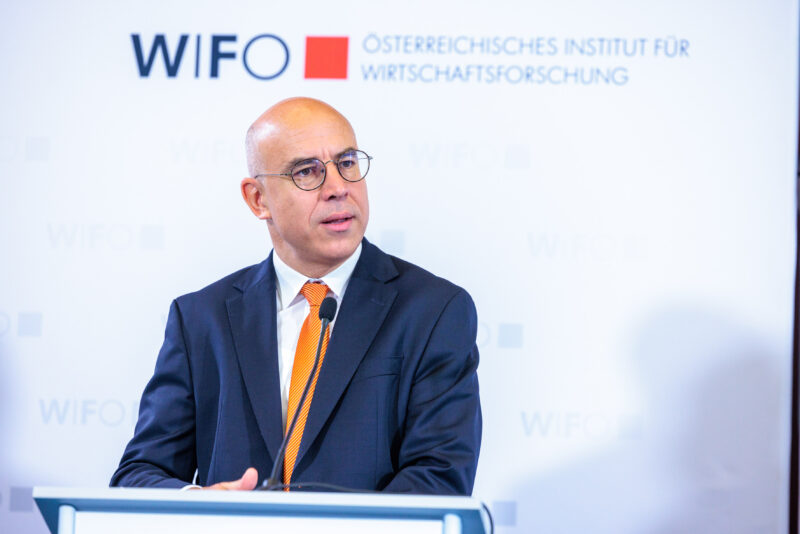
Regional Economy Continues to Weaken
Weak development in manufacturing characterises regional economy
In the third quarter of 2023, the (nominal) production value sold in Austria fell again by 4.2 percent compared to the same period of the previous year, according to the economic survey. All federal provinces recorded negative growth rates, ranging from –9.6 percent in Carinthia to –0.3 percent in Salzburg. At sectoral level, the strongest negative impetus came from the wood and paper industry as well as metal production and processing. The WIFO-Konjunkturtest (business cycle survey), which also asks companies in the manufacturing sector to assess their business situation, does not yet indicate any signs of recovery: some indicators remain close to the pessimistic values that were also observed at the height of the COVID-19 pandemic.
Further slowdown in the construction industry
Following noticeable losses in the first half of 2023, construction activity in Austria continued to deteriorate in the third quarter with a 5.2 percent decline in construction investment compared to the previous year. This is particularly evident in residential construction, which is contributing significantly to the current weak growth. A significant recession in the Austrian construction industry is therefore practically inevitable for 2023 as a whole.
Tourism demand in the 2023 summer season higher than ever before
Despite the current deterioration in economic conditions in Austria and various geopolitical uncertainties, tourism demand remains robust. In the summer months of May to October 2023, tourism demand will reach new record levels in terms of both arrivals (25.7 million) and overnight stays (80.9 million). However, rising prices for tourism products and services are having an impact on holiday behaviour. As already observed in summer 2023, there could also be a stronger shift in demand to the (cheaper) low season in winter 2023-24, as well as a reduction in the duration of trips and ancillary expenditure.
Situation on the regional labour markets is becoming tighter
The tense economic situation is also reflected in the current data on the regional labour markets (regional labour market data is already available for the fourth quarter of 2023). The growth rate of dependent active employment gradually weakened over the course of the year, but was still +0.7 percent in the fourth quarter of 2023 (+1.2 percent in 2023 as a whole). The strongest growth impetus in the fourth quarter of 2023 came from public services. Among the federal provinces, Vienna recorded the strongest growth in the number of persons employed (+1.4 percent), as it has done since the second quarter of 2023. Growth rates were also above average in Tyrol and Salzburg. This illustrates the resilience of the labour market, although it is not immune to rising unemployment in all federal provinces (except Carinthia) and all demographic groups. The decrease in job vacancies is particularly striking. The highest demand (unemployed persons per job vacancy) is recorded in Vienna, while the western region (Upper Austria, Salzburg, Tyrol and Vorarlberg) remains favoured in comparison to the rest of Austria.

Publications
Please contact


















